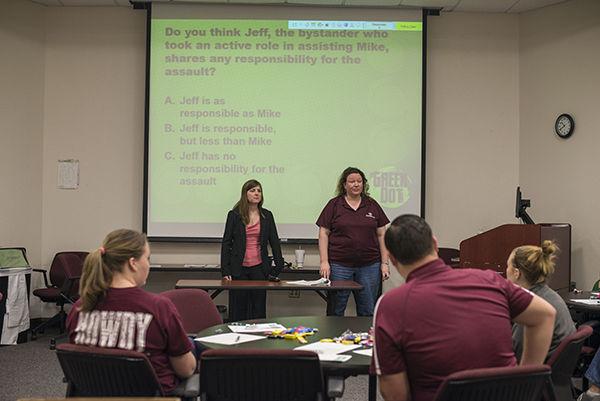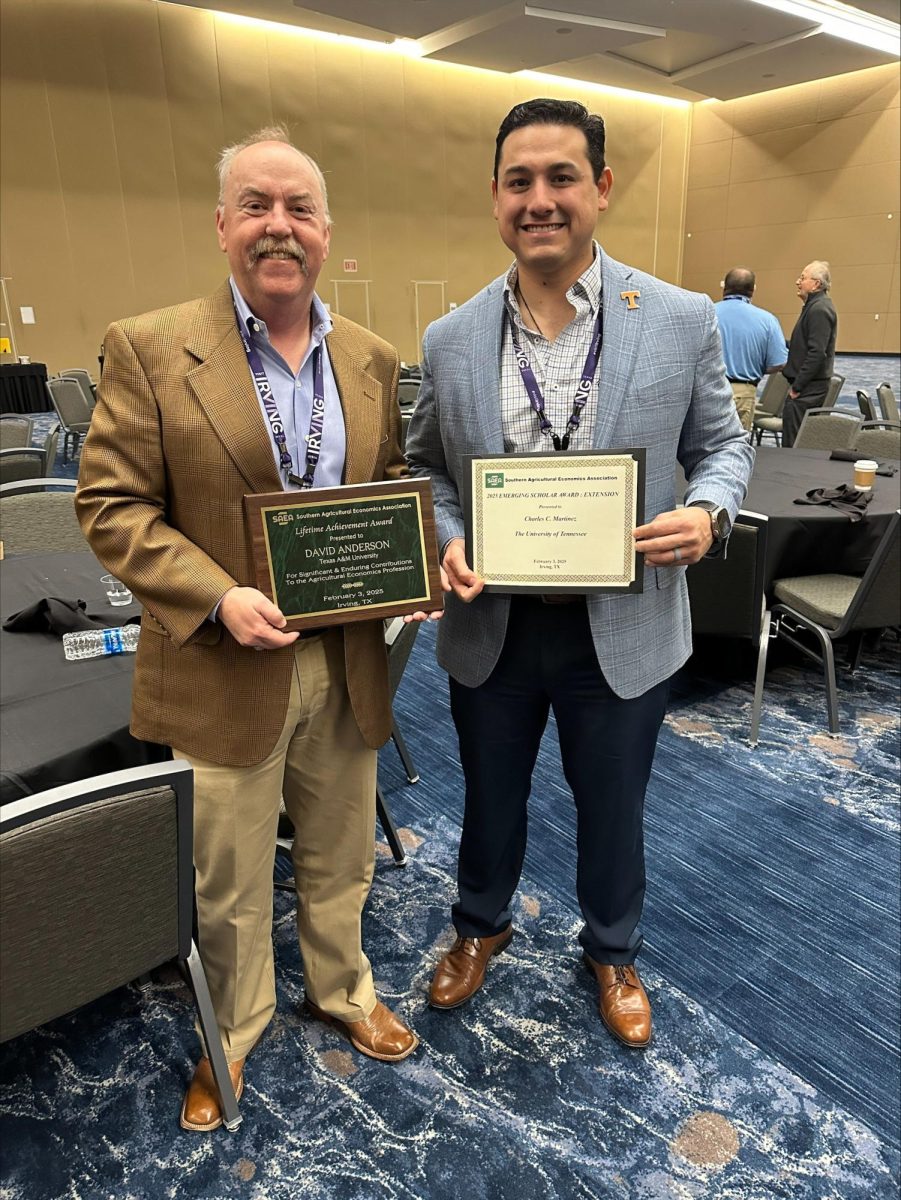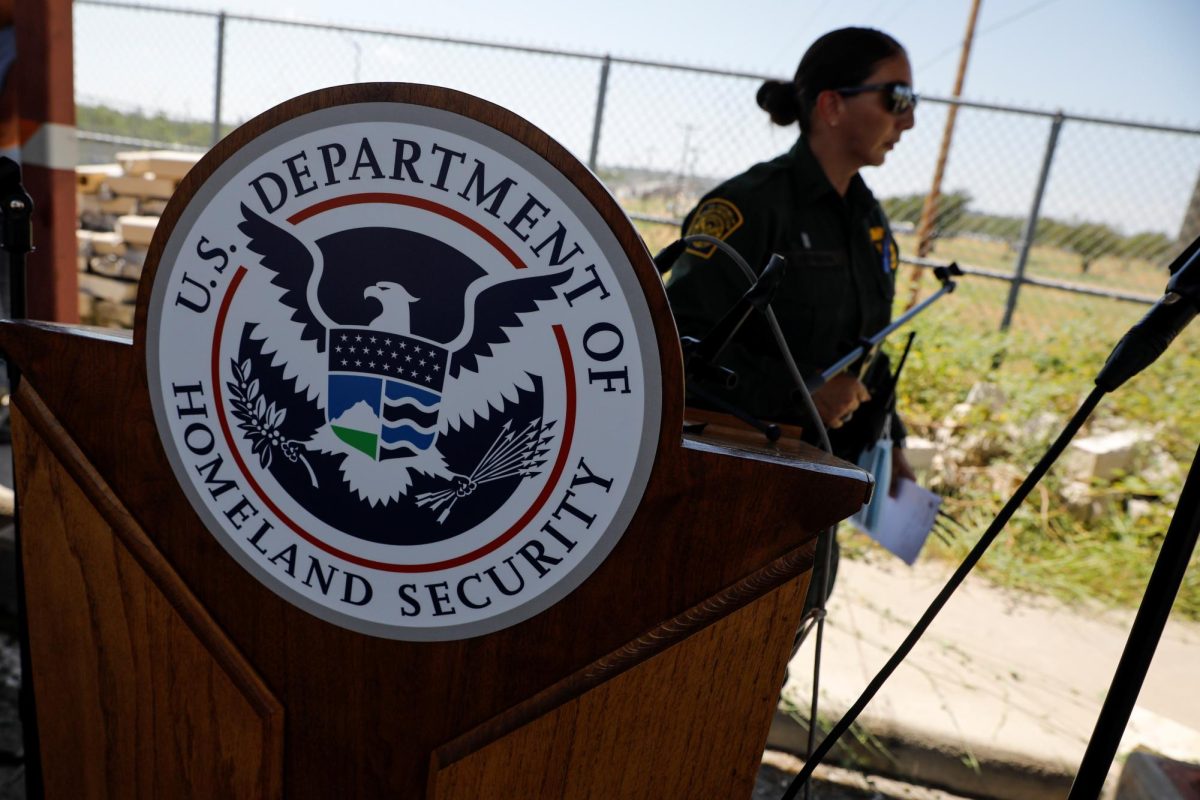Direct, distract, delegate — “the three Ds” that have the potential to diffuse dangerous situations, as taught through Texas A&M’s Green Dot bystander intervention program.
Green Dot is a program to help reduce situations of power-based violence on and off campus. While an aspect of the program involves sexual assault scenarios, other power-based problems — such as stalking and domestic violence — are included.
Carol Binzer, Green Dot facilitator and director of Administrative and Support Services for the Department of Residence Life, said the purpose of Green Dot is to show participants that everyone has the capability of being helpful. People are trained to be “Green Dots” to help in a situation involving a “Red Dot,” a person with malicious intent.
“So Green Dots, just like on a green light, that notion of go, and Red Dots are moments of bad decisions or somebody who wants to do harm whether it’s premeditated or spur of a moment,” Binzer said.
Angela Winkler, assistant director of Student Assistance Services and Green Dot facilitator, said along with teaching participants the skills they need to act in dangerous situations, Green Dot empowers them to start conversations on these difficult topics.
“Not that I want people going around talking about depressing topics, because I don’t,” Winkler said. “However, I think that these topics are important and deserve a little bit more conversation than they’re getting because an awareness of the fact that you can do something is a new concept to some people.”
Jesse Hernandez, educational administration graduate student, attended Green Dot training in February. He said discussions over each of the three key issues were enlightening for him.
“Relationship violence, sexual assault and stalking are topics that can be difficult to discuss at times,” Hernandez said. “The Green Dot training helped make conversations around these topics seem less daunting.”
Scenarios in the program range from peer pressure-induced drinking at a party to paying attention to situations that may lead to sexual violence. Many of the scenarios are intentionally gender neutral, Winkler said.
“It is a very natural assumption that the perpetrator is the guy, the victim’s the girl,” Winkler said. “It’s very easy to jump there … Hearing some of the assumptions that were happening, which happens with every group. It’s not just women who do that, it’s not just men, it’s everybody.”
Relating the courses to Aggie values resonates with participants, especially the reputation that Aggies seek to take care of each other. Binzer said it may be easier to spread awareness about the presence of sexual violence.
“On college campuses, there’s not an overt acknowledgement that sexual violence is there,” Binzer said. “We’re vulnerable to that, particularly our newest student women. The notion is that we’re sort of all both aware of that and interested in protecting everybody.”
By creating Green Dots, Binzer said there is a wider web of people with the knowledge to assist in abusive situations. She likened this to vaccinations.
“A number of people are inoculated so that if there’s an outbreak, a number of people are prepared or immune and have the wherewithal to do what they need,” Binzer said. “The thinking behind Green Dot is there is many more Green Dots, good folks, then there are people who are targeting others for violence or whatever.”
After attending a bystander training course, Chris Nygren, oceanography graduate student, said the program taught him multiple options, both direct and indirect, for preventing abuse in situations.
Sonia Mahabir, assistant coordinator in the Women’s Resource Center, said there are 80 people registered for the full bystander training. The numbers of attendants are slowly rising, and Binzer said this may be due to the shortening of the full bystander training. The course used to take about eight hours, which could be divided up over two days. Now, the course has been shortened to one three-and-a-half-hour day.
Winkler said the Green Dot training program is customizable for students and staff who cannot attend one of the courses.
“I mean, we can do an overview speech in 10 minutes — it’s not going to be great, but we can do it,” Winkler said. “Or we could do one in two hours. The full bystander training is three to three and half hours. But even within that we can customize it for their group.”
In the course, Winkler said she stressed that learning the skills doesn’t mean participants are suddenly able to diffuse any situation. Due to personal barriers or the circumstances, people may not be able to be Green Dots all the time, and Winkler said that is okay.
While Binzer said the program does not turn someone into a superhero, “cape included,” it does make people at A&M more aware of the part they can play in helping others out, without placing themselves in danger.
Students, faculty and staff interested in attending can find registration information at http://greendot.tamu.edu/. The next bystander training course is from 8:30 a.m. to noon on March 16.
Green Dot encourages students to intervene
March 10, 2015

Tanner Garza — THE BATTALION
Students attending a Green Dot workshop in February learn how to become an active bystander in a dangerous situation.
0
Donate to The Battalion
$2790
$5000
Contributed
Our Goal
Your donation will support the student journalists of Texas A&M University - College Station. Your contribution will allow us to purchase equipment and cover our annual website hosting costs, in addition to paying freelance staffers for their work, travel costs for coverage and more!
More to Discover









